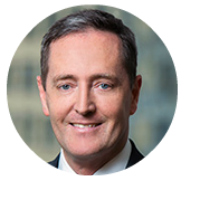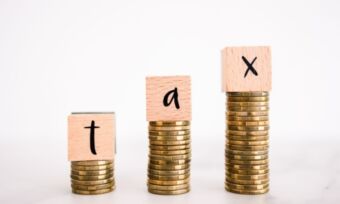Renting in retirement? Here's how much super you'll need

With more Aussies becoming “lifetime renters” it will mean they have to save more money for a comfortable retirement.
For many Australian retirees the family home is their largest asset and, together with superannuation, is a key plank in ensuring they have a comfortable retirement.
But what about retirees who don’t own their own home? Approximately one in every 12 Australians aged over 65 lives in a private rental property.
Retirees without a family home will need significantly more superannuation savings to fund a comfortable retirement as private rents generally greatly exceed the ongoing costs of a home owned outright.
The sobering reality is that retirees renting a private property in Sydney, Australia’s most expensive property market, will need more than $1 million in super.
The Association of Superannuation Funds of Australia (ASFA) estimates a single retiree renting privately in a one-bedroom unit in Sydney will need to spend $62,294 annually to achieve a comfortable retirement and a couple renting a two-bedroom unit will need to spend $81,997 a year. By comparison a single homeowner in Sydney needs around $43,787 a year while the figure is $61,786 for couples.
These numbers are based on ASFA’s Retirement Standard, which tracks living costs to produce quarterly benchmarks for annual budgets needed by Australians to fund either a comfortable or modest standard of living in retirement and are based on retiring at age 65. See the below tables for the costs included in the estimates.
Retirement budgets for renters in Sydney
← Mobile/tablet users, scroll sideways to view full table →
| Modest lifestyle Single |
Modest lifestyle Couples |
Comfortable lifestyle Single |
Comfortable lifestyle Couples |
|
|---|---|---|---|---|
| Housing – ongoing only | $337.00 | $421.00 | $473.00 | $511.00 |
| Energy | $36.71 | $49.30 | $46.50 | $57.67 |
| Food | $91.09 | $168.87 | $117.77 | $204.69 |
| Clothing | $20.71 | $39.35 | $27.66 | $51.51 |
| Household goods and services | $33.42 | $39.29 | $73.63 | $90.69 |
| Health | $49.58 | $95.67 | $101.69 | $190.41 |
| Transport | $89.72 | $95.83 | $146.41 | $158.85 |
| Leisure | $93.92 | $147.24 | $183.66 | $276.00 |
| Communications | $18.43 | $20.76 | $23.05 | $30.00 |
| Total per week | $770.57 | $1,077.32 | $1,193.37 | $1,570.83 |
| Total per year | $40,224 | $56,236 | $62,294 | $81,997 |
Source: ASFA, figures as at September 2019. Assumes retiring at age 65.
Retirement budgets for homeowners in Sydney
← Mobile/tablet users, scroll sideways to view full table →
| Modest lifestyle Single |
Modest lifestyle Couples |
Comfortable lifestyle Single |
Comfortable lifestyle Couples |
|
|---|---|---|---|---|
| Housing – ongoing only | $101.17 | $113.68 | $118.45 | $123.82 |
| Energy | $36.71 | $49.30 | $46.50 | $57.67 |
| Food | $91.09 | $168.87 | $117.77 | $204.69 |
| Clothing | $20.71 | $39.35 | $27.66 | $51.51 |
| Household goods and services | $33.42 | $39.29 | $73.63 | $90.69 |
| Health | $49.58 | $95.67 | $101.69 | $190.41 |
| Transport | $89.72 | $95.83 | $146.41 | $158.85 |
| Leisure | $93.92 | $147.24 | $183.66 | $276.00 |
| Communications | $18.43 | $20.76 | $23.05 | $30.00 |
| Total per week | $534.73 | $770.00 | $838.82 | $1,183.65 |
| Total per year | $27,913 | $40,194 | $43,787 | $61,786 |
Source: ASFA, figures as at September 2019. Assumes retiring at age 65.
Whether single or in a couple, renting retirees are at a distinct financial disadvantage. Retirees in Sydney would need about $1,050,000 for a single and $1,200,000 for a couple at retirement to reach the ASFA comfortable standard. This compares to $545,000 for a single and $640,000 for a couple who own their own home.
ASFA modelling shows single retirees renting outside Sydney slip under the million-dollar mark but are still very high. For example, single retirees renting in Adelaide, Hobart and Perth need around $850,000 to have a comfortable lifestyle.
Ultimately, retirees will need to spend a lot more in retirement if they haven’t achieved home ownership and will actually require a nest-egg roughly twice that of what homeowners need.

Housing affordability may remain a challenge
Housing affordability and availability is a significant and increasing concern for many people, including older Australians grappling with the private rental market. Housing affordability is a particularly serious challenge for those living in Sydney as evidenced by the fact that only 65% of Sydney residents are homeowners by the age of 60 compared to just under 80% for the rest of the country.
Sydney is one of Australia’s more expensive cities for renting, but average rentals for one- and two-bedroom apartments in inner and middle rings of Canberra, Melbourne, Darwin, Brisbane and Perth would not be dissimilar.
The figures in the tables above have been calculated on the assumption that retirees will live to 92 and do not take into account the additional costs associated with moving on any regular basis, with the latter the reality for many Australians in the private rental market.
The worrying fact is that housing affordability challenges seem likely to continue, so having a good super balance in retirement is even more important for non-homeowners.
Falling home ownership rates coupled with the fact that 8% of Australians aged 65 are still paying off their mortgage also reinforce the need to get to the 12% contribution rate for the super guarantee as soon as possible
Simple tips for achieving a comfortable retirement
Given the median account balance for Australian pre-retirees in the 60 to 64 age group is $154,450 for males and only $122,850 for women, many retirees – both homeowners and renters – are likely to have a shortfall.
Australians should consider investing in their future with additional contributions to their superannuation if they do not own their own home.
The key thing is to get engaged with your super as early as possible, determine the retirement balance needed and then work out what additional contributions you will need to make to reach the comfortable standard.
The numbers all depend on what an individual person has to start with, what their salary is, whether they already make salary sacrifice contributions and what their other financial assets are.
It’s important to begin planning as soon as possible.

About Dr Martin Fahy
Dr Martin Fahy is CEO of the Association of Superannuation Funds of Australia (ASFA).
Main image source: Watchara Ritjan (Shutterstock)
Try our Superannuation comparison tool to instantly compare Canstar expert rated options.







